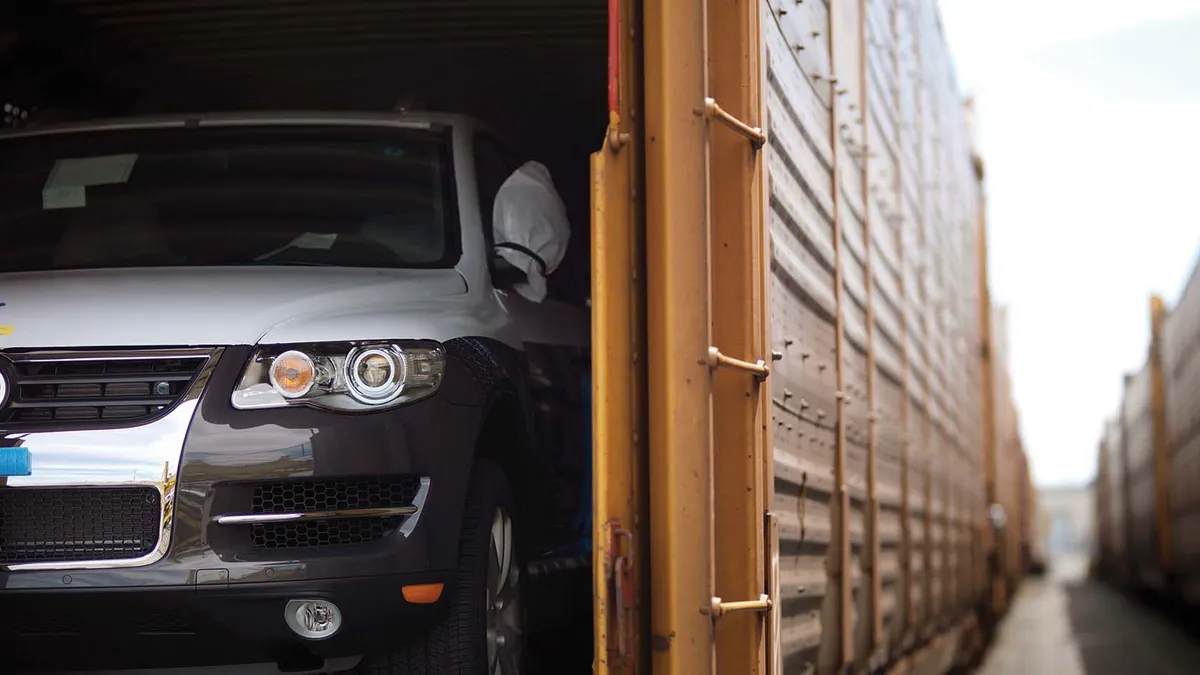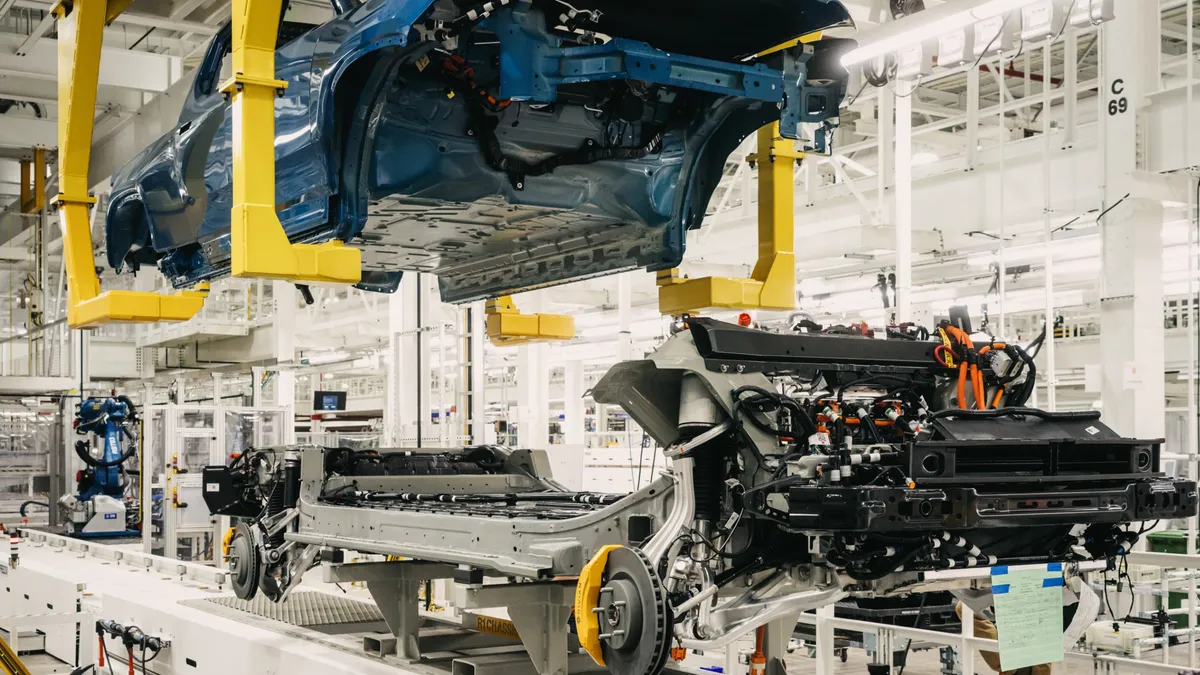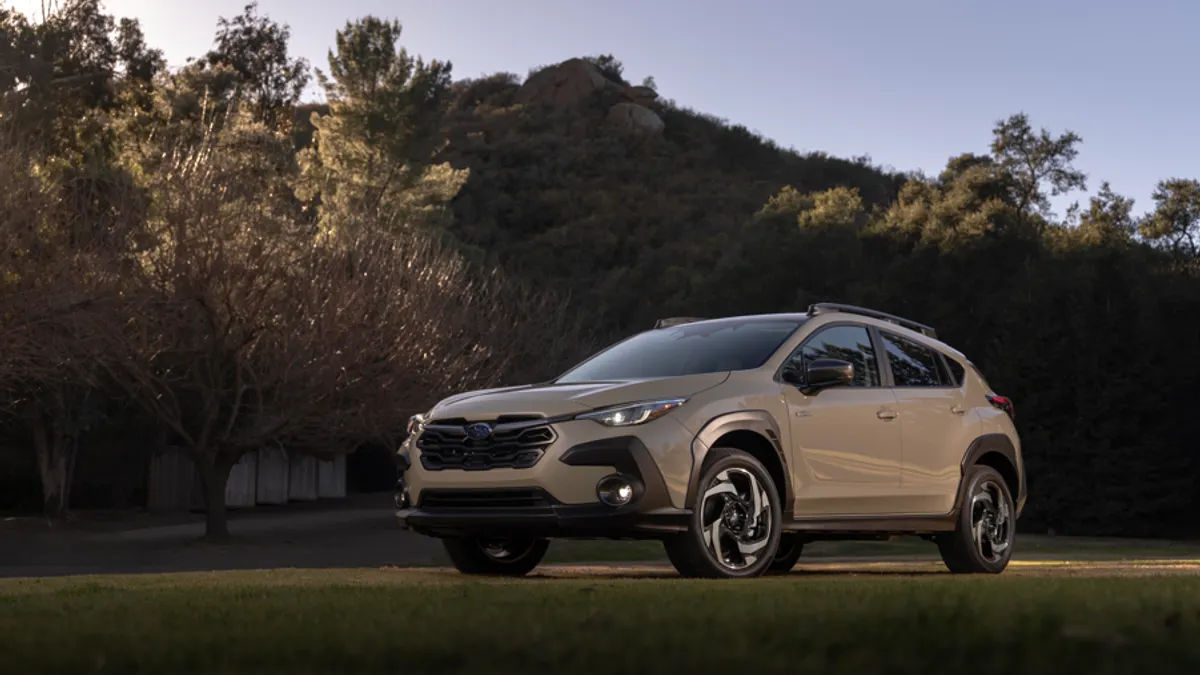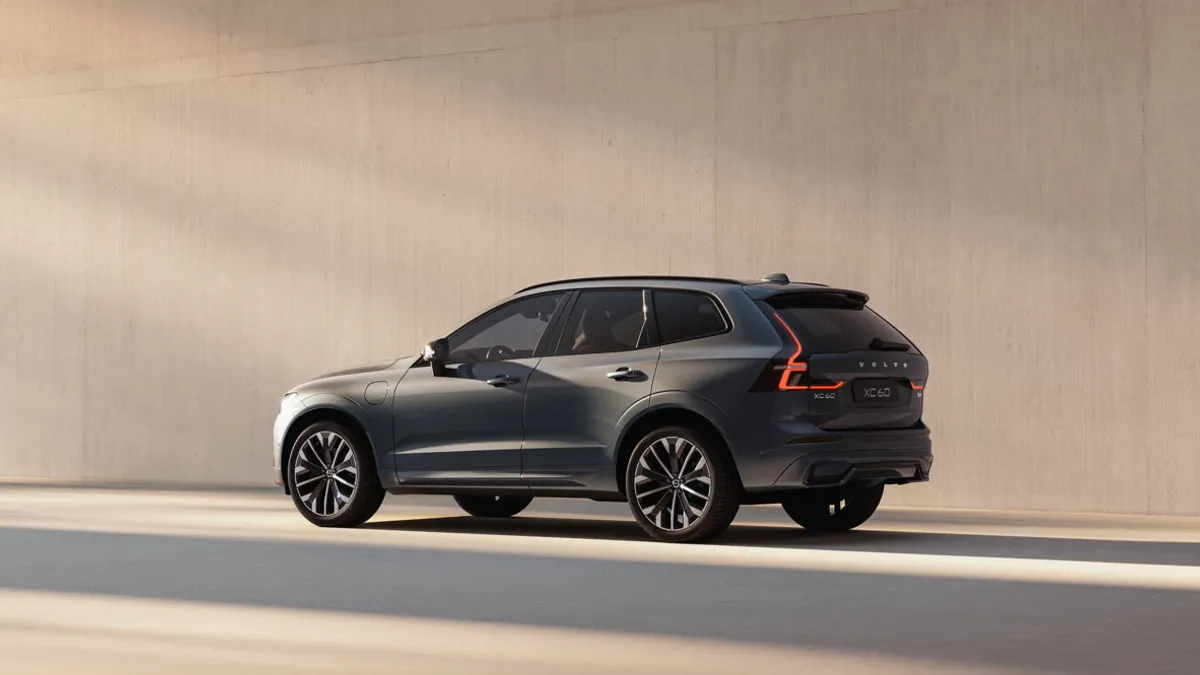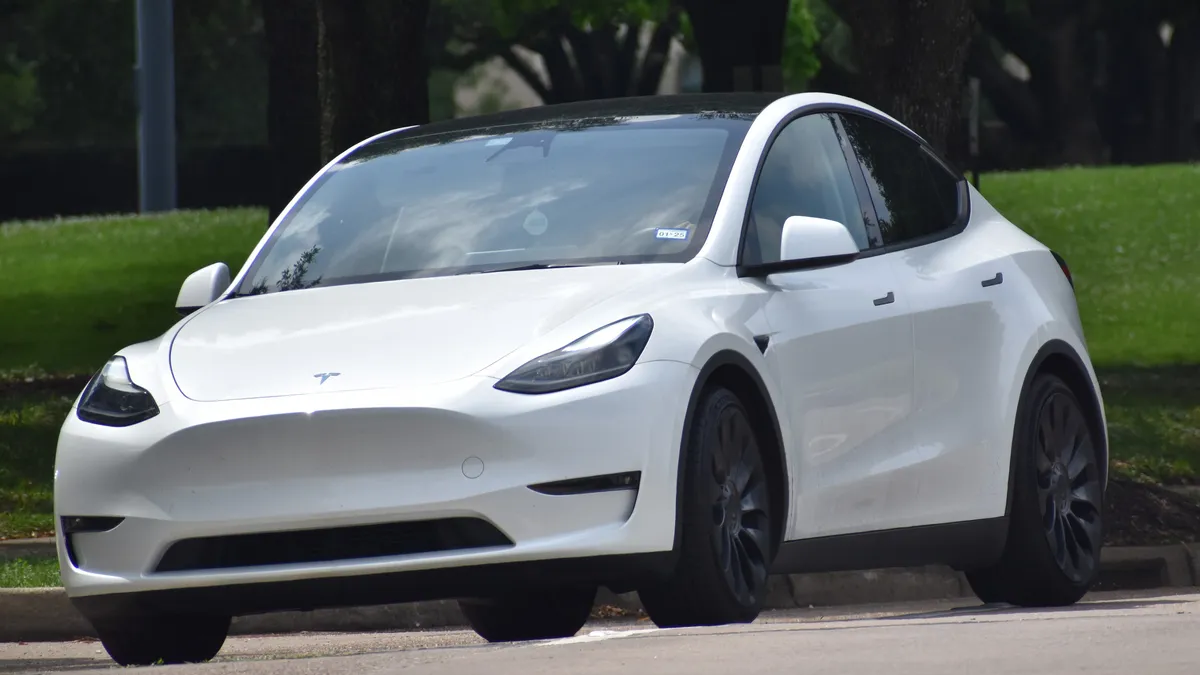Editor’s note: This story was first published on WardsAuto.
The Trump administration’s levy of 25% tariffs on the bulk of America’s trade in autos and automotive parts will disrupt the industry worldwide, government officials and industry analysts around the world say.
It is unclear whether retaliation by the U.S.’s main trading partners will prompt a retreat, re-negotiation or an isolation of the American auto industry, with other countries increasing trade with each other to make up for lost U.S. sales. But what is clear is the level of concern it has raised worldwide.
One sign of potential flexibility: The Trump administration did not add its auto tariffs to the blanket 10% tariffs on all goods plus often higher rate “reciprocal” tariffs for certain jurisdictions, such as 20% for the EU, 24% for Japan, 25% for South Korea and 10% for the UK.
USMCA partners Canada and Mexico escaped reciprocal tariffs but still will face the auto and auto parts duties starting today, with the 25% tariff in steel and aluminum also remaining in effect for all countries. The rates for Canadian and Mexico auto exports still will be the lower 12.5% tariff for USMCA-compliant vehicles with 50% American content, with a decision on what parts will be covered to be implemented by May 3.
Canadian Prime Minister Mark Carney said this week that Canada will act with “purpose and with force” to fight new U.S. tariffs, including countermeasures, which may be imminent. European Commission President Ursula von der Leyen said the EU will launch a “strategic dialogue” with the European auto sector to cope with the tariffs: “I deeply regret this choice,” she said, predicting, “the global economy will suffer.”
In the U.K., Mike Hawes, chief executive of industry association SMMT, warned: “These tariff costs cannot be absorbed by manufacturers, thus hitting U.S. consumers who may face additional costs and a reduced choice of iconic British brands, whilst U.K. producers may have to review output in the face of constrained demand.”
Will tariffs mean reshoring?
Despite skepticism from economists, the Trump administration thinks reshoring of auto production should follow tariffs, although it is far less vocal on the potential loss of export sales due to retaliatory measures. In the executive order imposing 25% tariffs, Trump said: “Foreign automotive industries, propelled by unfair subsidies and aggressive industrial policies, have grown substantially. Today, only about half of the vehicles sold in the United States are manufactured domestically, a decline that jeopardizes our domestic industrial base and national security.”
The administration has been supported in its stance by the UAW: “We applaud the Trump Admin. for stepping up to end the free-trade disaster that has devastated working class communities for decades. Ending the race to the bottom in the auto industry starts with fixing our broken trade deals, and the Trump Admin. has made history with today’s actions,” said UAW President Shawn Fain. He predicts tariffs will mean “thousands of good-paying blue-collar auto jobs could be brought back to working-class communities across the United States within a matter of months, simply by adding additional shifts or lines in a number of underutilized auto plants.”
But the UAW was silent on resulting potential job losses to the Canadian and Mexican working class caused by U.S. protectionism. And Lana Payne, president of Unifor, the Canadian autoworkers union, is unhappy: “Donald Trump has convinced himself that, somehow, the jobs of Canadian autoworkers are his to claim. We have built cars here for over a century, long before the U.S. was our primary trade partner. I will state this as clearly and unequivocally as I can. These are not his jobs to take.”
Her views reflect a dominant international consensus towards backing free — or at least freer — trade in the global automotive sector. The American Automotive Policy Council has been cautious not to outright oppose the Trump administration’s tariffs, saying U.S. automakers are “committed to President Trump’s vision of increasing automotive production and jobs in the U.S.”
But AAPC President Matt Blunt added: It is “critical that tariffs are implemented in a way that avoids raising prices for consumers and that preserves the competitiveness of the integrated North American automotive sector that has been a key success of the President’s USMCA agreement.”
The AAPC followed up with a report from American economist Art Laffer who concludes a 25% tariff on auto imports would “raise vehicle prices in the U.S., disrupt long-term investment cycles and create uncertainty by weakening consumer confidence and supply-chain stability.”
It proposes a USMCA exemption “leveraging our Canadian and Mexican trading partners.” That would enable U.S. auto companies to integrate competitive costs for parts and assembly in Canada and Mexico to build autos that are cheaper in the U.S. and overseas market. Indeed, Laffer argues that a global 25% tariff could increase the price of vehicles in America by an average of $4,711. With a USMCA exemption, that increase would fall to $2,765. And that assumes auto parts only attract one tariff, when the integrated auto industry under USMCA rules often ships parts and components across the borders three to four times before assembly. The paper highlights concern from the Anderson Economic Group that this could increase costs per vehicle between $4,000 and $10,000.
Canada is upset
In Canada, auto-industry organizations have been clearer on the universal damage of tariffs. David Adams, Global Automakers of Canada president said: “Tariffs are taxes that hurt consumers by increasing cost and driving up inflation, while also unfairly impacting workers on both sides of the border. We need a long-term solution that removes these unjustified tariffs and ensures stability and competitiveness for all North American businesses.”
He told WardsAuto that in the ongoing federal government election campaign with a poll on April 28, both key contenders — Liberals and Conservatives — are assessing the ability and viability of looking beyond the U.S. for auto export sales.
But with the U.S. currently taking 85% of Canada’s vehicle and auto-parts output, that will be tough, even if the government leverages trade deals such as CETA (the Comprehensive Economic and Trade Agreement, with Europe), the CPTPP (Comprehensive and Progressive Agreement for Trans-Pacific Partnership, in the Asia-Pacific), and the Canada–Korea Free Trade Agreement.
Adams’s organization has recommended against imposing auto tariffs on U.S. production, noting that American production of battery-electric vehicles would impede Canada from meeting current federal and provincial mandates to sell electric rather than combustion vehicles.
Hopefully, he said, the U.S. government will in time recognize the competitive advantage Canada brings U.S.-owned automakers, such as government-funded healthcare; a weaker currency that reduces costs; an unrivaled tool, die and moldmaking sector near Windsor, Ontario; and high-quality education delivering an efficient workforce, Adams said.
Ultimately, without a U.S. market the Canadian industry will struggle to maintain its current scale, one auto analyst told WardsAuto. Even if protected from U.S. competition and with additional non-U.S. exports, such sales and the Canadian market would not be “large enough to sustain an industry that puts out 3,000 to 4,000 vehicles a day.”
European concerns
There are similar concerns in Europe. The EU likely will target U.S. auto, motorcycle and auto-component exports in a package of retaliatory measures still being drafted. Its executive European Commission has stalled a retaliatory package planned to take effect April 13 while waiting for Trump’s April 2 announcement but is aiming to avoid tariffs through “a negotiated solution.”
The EC’s Von der Leyen told the European Parliament this week: “We would all be better off if we could find a constructive solution. At the same time, it also has to be clear: Europe has not started this confrontation. We do not necessarily want to retaliate, but we have a strong plan to retaliate, if necessary.”
Europe’s auto industry associations have highlighted the impact on both OEMs and suppliers, including European firms producing vehicles and parts in North America. Figures from ACEA, the European automobile manufacturers’ association, show Europe’s automakers exported 757,654 new vehicles worth €38.9 billion ($43.3 billion) stateside in 2024, dwarfing the 169,152 new vehicles worth €7.8 billion the bloc imported from the U.S. But ACEA notes international automakers manufacture nearly 4.9 million vehicles in the U.S. annually, accounting for 48% of total production, with European-headquartered firms responsible for around 830,000 units and exporting 50% to 60% of their U.S.-made vehicles.
Parts makers represented by CLEPA, the European automotive suppliers' lobbying group, face a double whammy from both direct auto tariffs and those already levied on aluminum and steel components. To offset the negative trade balance with China from a doubling in Chinese imports into Europe since the COVID-19 pandemic, the EU supplier industry has upped U.S. trade, leaving it particularly vulnerable to tariffs. The €8.7 billion in annual auto component exports to the U.S. over the last five years have helped create a €7 billion global trade surplus for European suppliers.
“Within the EU, the U.S. tariff hike of 25% on automotive imports will likely have strong negative effects on the countries in the EU’s manufacturing core – Germany, Austria and the Visegrád countries (the Czech Republic, Hungary, Poland and Slovakia) – which are strongly interwoven in the European and global automotive value chains,” Robert Stehrer, scientific director at the Vienna Institute for International Economic Studies, told WardsAuto. “This represents another blow to the EU’s struggling automotive industry on top of the pressures from the green transition (to BEVs) and the Chinese competition.”
Stehrer believes Slovakia has the most to lose, given its “large exposure to the automotive industry,” with a potential loss of 1.1% of total exports, followed by Hungary, Germany and Sweden, each dropping 0.31%, and Austria, falling 0.21%, with the EU average around 0.14%.
While Stehrer forecasts Mexico taking the biggest hit globally from auto tariffs in terms both of exports and value added, CLEPA underlines that the country is a key hub for EU suppliers, who have invested €9.5 billion in Mexican production facilities over the last decade. EU suppliers also invested nearly €8.7 billion in the U.S., creating 35,000 jobs, out of a total €18.4 billion invested across North America.
“Modern vehicle manufacturing is not confined to national borders. Components often cross borders multiple times before final assembly – whether in the U.S. or the EU. Automotive transatlantic value chains today are deeply interwoven,” CLEPA President Matthias Zink stressed in a statement
Mexican standoff
Mexico certainly will be looking for alternative automotive markets should tariffs hit hard, although President Claudia Sheinbaum has avoided an aggressive response, saying Mexico will “announce a comprehensive program, not a tit-for-tat on tariffs.” According to AMIA, the Mexican auto industry association, between January and July 2024, Mexico exported 1,986 million light vehicles, 79% of them to the U.S.
Meanwhile, Mexican auto parts production reached $113 billion between January and November 2024, with Mexico accounting for 43.18% of the U.S.’s total imports, as noted by Mexico’s National Auto Parts Industry Association.
The sector has grown 140% since 2010, the group says, with Mexico now being “the fourth largest global producer of auto parts” and “an important source of raw materials, such as steel, for the U.S. automotive industry.” It also stresses its USMCA integration. For example, “the vehicle seatbelt system is made up of more than 30 components, which cross the Mexico, U.S. and Canada borders between seven and eight times before becoming a finished product.”
Thomas Karig, a Mexico-based automotive sector consultant and a former Volkswagen vice president, believes that “at the end of the day, customers are there” so companies will “try to continue selling” in the U.S. with the tariffs, which “will be just another tax” on both consumers and businesses.
Companies will both increase prices and absorb the extra cost, making cars more expensive and impacting sales, but not wiping out the Mexican auto and parts industry, he said.
Furthermore, Trump’s plan to attract factories to the U.S. might not succeed. Karig warned that moving plants “is not that easy,” noting it can take “three years until the first cars are ready.” He said only companies with spare capacity might “move a model from here to there in an existing plant.” Executives will worry tariffs might be canceled or changed and “investment decisions in this industry are made over the very long-term so that factories can be operating for decades.”
It will be challenging “to replace the current offerings that German, Korean and Japanese companies have in the U.S.” with U.S. companies such as General Motors and Ford suffering because they “import a good portion of their vehicles.”
Mexico could try to sell to alternate markets, taking advantage of the country’s 14 free-trade agreements (including with the EU), but Karig said companies making cars in Mexico for other regions are “going to be left with less production” even if “Mexico is very competitive” in costs and productivity, and “has the geographical possibility of exporting across two oceans.”
Karig still hopes that the Mexican government’s efforts to curb the tariffs will bring results. That could include another option under consideration in Mexican government and industry circles: a renegotiation of the USMCA that is less favorable to Mexico. The current trade deal helped increase Mexican auto parts production 29% between 2019 and 2024.
Asian anxiety
Similar struggles to frame an effective tariff response can be seen in Japan, which has been hit by a significant reciprocal tariff as well as 25% protection on auto exports to the U.S.
“The implications for car firms are very serious,” said Takaki Nakanishi, CEO of the Tokyo-based Nakanishi Research Institute and a specialist in the auto sector. He stressed the tariffs risk export sales from manufacturers worldwide: “Japan has some advantages over European manufacturers,” notably its extensive direct investment in the U.S.”
Moreover, Nakashini noted how Trump “is known for changing his mind, so the Japanese government still has a chance to convince him to treat Japanese manufacturers differently.”
The Japan Automobile Manufacturers Assn. said Japan exports 1.37 million cars to the U.S. annually, valued at ¥6 trillion ($40 billion), representing 30% of Japan’s total auto exports. So the industry certainly wants special treatment, and Prime Minister Shigeru Ishiba said this is justified, arguing Japanese corporations are the largest investors in the U.S., generating thousands of American jobs.
Speaking in Tokyo in March, JAMA Chairman Masanori Katayama said Japanese cumulative investment in the U.S. automotive sector has risen to $61.6 billion, with and 3.2 million Japanese-brand vehicles produced in the U.S. per year. Japanese automakers directly employ 110,000 people across the U.S., supporting 2.2 million jobs indirectly.
“We believe that the current measures and other broad-based trade restrictions by the U.S. government could have a significant impact on the economic relationship between Japan and the U.S., as well as on the global economy and the multilateral trading system,” warned Yoshimasa Hayashi, the chief cabinet secretary, describing the tariffs as “extremely regrettable.”
Japan is unlikely to respond with reciprocal tariffs, as Tokyo worries an aggrieved Trump could withdraw security guarantees protecting against a resurgent China, security analysts told Wards.
Katayama added that as the auto sector switches to BEVs, “maintaining a strong and open trade system between Japan and the United States is extremely important to Japan’s automotive industry, which employs 5.5 million people.”
Of Japan’s manufacturers, Mazda may face the greatest exposure to tariffs as just 20% of the 420,000 cars it sells annually in the U.S. are made in America. The company is looking to increase production at the Alabama plant it jointly operates with Toyota, according to a report in Japan’s Asahi Shimbun newspaper.
In South Korea, acting President Han Duck-soo has ordered emergency support measures for businesses hit by American tariffs.
And in China, where total levies are now 54%, and the auto sector also is facing a 25% special tariff, the government has signaled it wants to work with Japan and South Korea in coordinating a response to the U.S. tariffs, according to social media posts on an account run by state broadcaster the China Media Group.
Last Word
The key impact from the tariffs might be felt in the U.S., given the American auto sector’s reliance on parts from Canada and Mexico. Those supplies that will be subject to tariffs beginning May 3 cannot be easily replaced with local production.
Canada Automotive Parts Manufacturers' Association’s President Flavio Volpe predicts the result succinctly on X: “The. Auto. Tariff. Package. Will. Shut. Down. The. Auto. Sector. In. The. USA. And. In. Canada. Don’t be distracted. 25% tariffs are 4 times the 6/7% profit margins of all the companies. Math, not art.”


